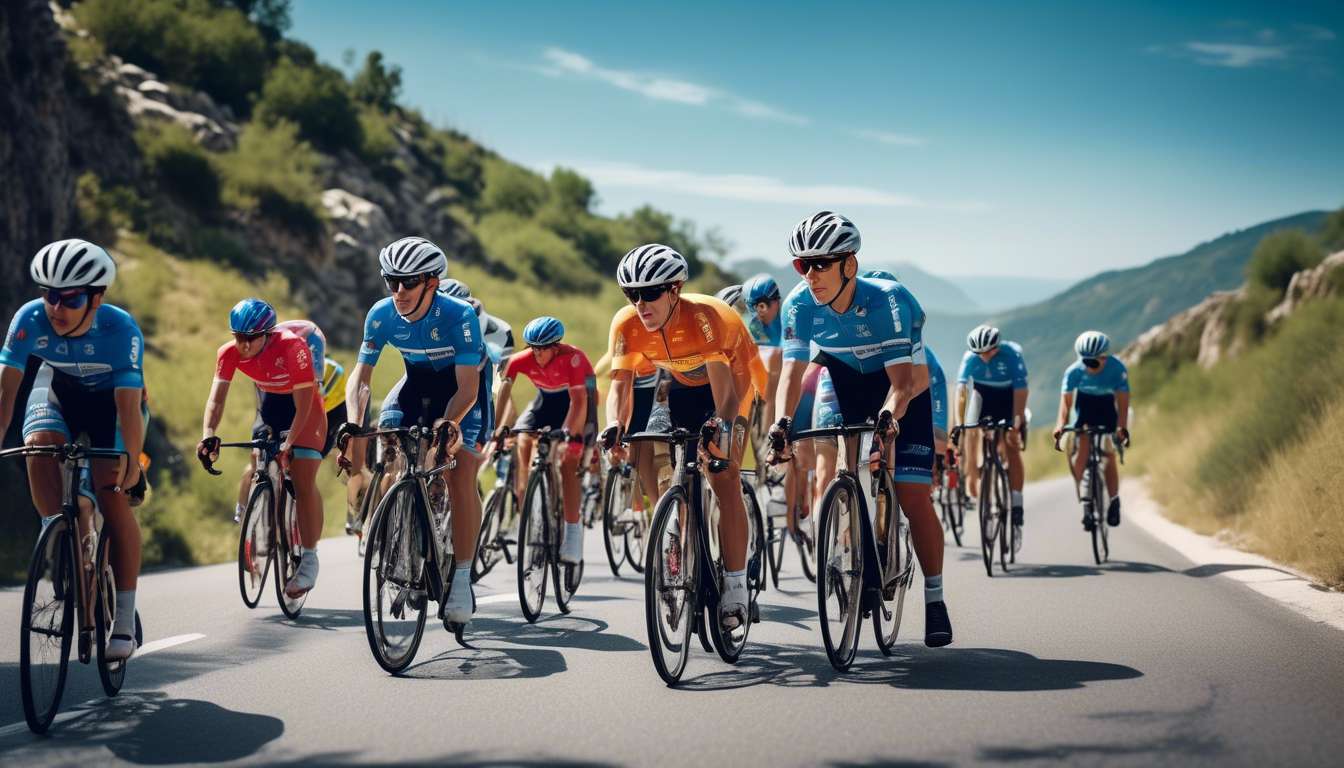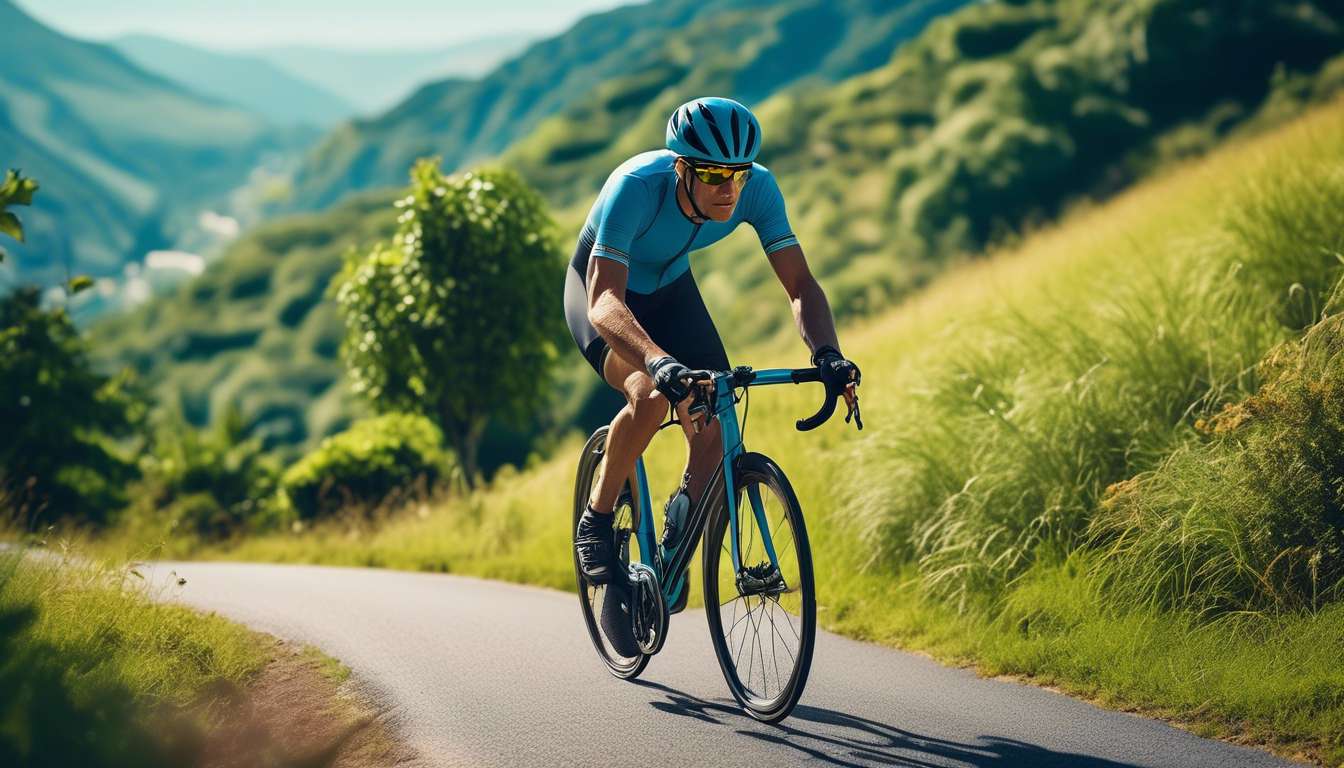Every summer, we find ourselves captivated by the grandeur and grueling challenge of the Tour de France, a spectacle that combines athletic prowess with breathtaking landscapes. As avid followers of the race, we often marvel at the riders as they conquer the daunting mountain stages, where the true test of endurance and strategy unfolds.
Yet, amidst our excitement, we realize that the intricacies of mountain classifications can be perplexing. Why do some climbs seem more significant than others, and what determines their categorization?
In our quest to deepen our appreciation of this legendary race, we embark on a journey to unravel the complexities of mountain classifications. By understanding the criteria and historical context behind these designations, we aim to enhance our viewing experience and gain a richer insight into the challenges faced by the cyclists.
Join us as we delve into the heart of the mountains, where legends are born and the spirit of competition thrives.
Overview of Mountain Classifications
Mountain classifications in the Tour de France are crucial for understanding how different climbs impact the race and its strategies. These classifications help us grasp the race dynamics, making the experience richer and more engaging.
They range from:
- Category 4: The easiest climbs.
- Category 3: Moderate difficulty.
- Category 2: More challenging.
- Category 1: Very difficult.
- Hors Catégorie (HC): Reserved for the most grueling climbs.
The climbs themselves are more than just obstacles; they’re pivotal moments that can change the course of the race. As fans, knowing these categories connects us, allowing us to appreciate the immense effort our heroes exert on each climb.
As we watch, we can’t help but feel the tension and excitement as the peloton approaches the mountains. Understanding these mountain classifications brings us closer to the action, letting us anticipate shifts in the race dynamics.
Together, we celebrate the triumphs and share in the challenges, united by the thrill of the climb.
Importance of Mountain Categories
Mountain categories in the Tour de France play a pivotal role in shaping race strategies and determining the overall outcome. These categories help us understand the intensity and challenge of different climbs, creating a shared language that bonds us as fans and strategists alike.
Influence on Race Tactics:
-
When we dissect these classifications, we see how they influence the tactics teams employ.
-
Climbers, or "grimpeurs," often target specific stages to gain time over rivals.
-
Sprinters focus on conserving energy for flatter terrains.
Symbolism and Significance:
-
The mountain classifications aren’t just numbers; they’re symbols of endurance and triumph.
-
They remind us that every climb has a story, a test of will that every rider faces.
Community and Experience:
- As fellow enthusiasts, we recognize the importance of these mountain categories in shaping the drama and excitement that define the Tour de France experience.
By understanding these nuances, we’re not just observers; we’re part of a community that values the intricate dance of race dynamics.
Criteria for Categorizing Climbs
To grasp how climbs are categorized in the Tour de France, we first need to explore the key factors that determine their classification. Together, we’ll uncover the secrets behind mountain classifications, where each climb is evaluated based on its:
- Length
- Gradient
- Elevation gain
These factors directly influence race dynamics, making some climbs more challenging and decisive than others.
When we analyze these climbs, we look at several components:
-
Length of the Climb: This tells us how long the riders will endure uphill battles.
-
Gradient or Steepness: This reveals how intense the challenge will be.
-
Elevation Gain: This measures the vertical climb from start to finish.
All these elements combine to assign a climb its category, ranging from Category 4, the easiest, to Hors Catégorie, the most demanding.
By understanding these criteria, we become part of the cycling community, appreciating the strategy and skill required to conquer these formidable ascents and how they shape the Tour de France’s thrilling race dynamics.
History of Mountain Classification System
The evolution of the mountain classification system in the Tour de France has a fascinating history that reflects the race’s growing complexity and challenge. Initially, the mountains were simple hurdles in the race’s path. However, as the event grew, so did the need for a structured way to categorize these climbs.
By 1933, race organizers introduced the first mountain classifications to differentiate between the varying difficulties of climbs, enhancing both the race dynamics and our understanding of the riders’ prowess.
Over the years, we’ve witnessed the classifications evolve into categories:
- Category 4: Relatively gentle climbs.
- Category 3
- Category 2
- Category 1
- Hors Catégorie: Reserved for the most grueling ascents.
Each category adds a layer of strategy and excitement, fostering a sense of unity among fans and competitors alike.
We share a collective admiration for those who conquer these climbs, celebrating the stories that emerge and the spirit of perseverance that defines the Tour de France.
Impact on Race Dynamics
The mountain classifications fundamentally alter how teams strategize and riders pace themselves throughout each stage of the Tour de France.
We’re not just watching riders cycle; we’re witnessing a thrilling chess match on wheels. Climbs categorized from 4 to HC (Hors Catégorie) dictate tactics and influence race dynamics, creating intense moments that bring us together as fans.
In the mountains, teamwork becomes paramount.
Teams must decide:
- Who will break away
- Who will protect their lead rider
The ascents challenge riders’ endurance and mental strength, causing shifts in the peloton’s momentum. We see alliances form and dissolve, with each climb testing loyalty and strategy.
As fans, we feel the tension and excitement rise with every pedal stroke.
The mountain classifications ensure that no stage is predictable. Our community eagerly anticipates the drama that unfolds when riders conquer these daunting climbs. Together, we share in the awe of witnessing human endurance and strategy at its finest.
Notable Mountain Stages in Tour de France
Few moments in the Tour de France captivate us as much as the legendary mountain stages that define the race’s most challenging and dramatic battles. These stages showcase the grit and determination of cyclists as they conquer some of the most formidable climbs in the world. We find ourselves on the edge of our seats, watching the race dynamics unfold, where every pedal stroke and strategic move matters immensely.
Iconic Mountain Stages:
-
Alpe d’Huez
- Renowned for its 21 hairpin turns and steep ascent.
- Classified as an ‘Hors Catégorie’ climb, signaling its difficulty.
- Plays a pivotal role in shaping the overall standings.
-
Mont Ventoux
- Known for its barren landscape and relentless gradient.
- Tests the limits of every rider.
These stages aren’t just about physical endurance; they evoke a shared sense of awe and adventure, uniting us as we cheer for those who push through the pain to create unforgettable moments.
Strategies for Conquering Mountain Challenges
To conquer mountain challenges in the Tour de France, we must focus on mastering pacing and energy conservation.
Understanding mountain classifications is crucial, as each climb demands a unique approach. Whether it’s Hors Catégorie or Category 4, knowing the intricacies of these climbs helps us strategize and maintain our energy reserves effectively.
Teamwork plays a vital role in shaping race dynamics. We rely on our teammates to:
- Set a steady pace, allowing us to conserve energy for critical moments.
- Provide opportunities for drafting, which reduces wind resistance and makes challenging ascents slightly more manageable.
Let’s not forget the importance of mental resilience. As we tackle these daunting climbs together:
- The support from our team is invaluable.
- A shared sense of purpose keeps our spirits high.
Every pedal stroke is a testament to our collective strength and determination. By embracing these strategies, we become part of a community that thrives on overcoming the Tour’s formidable mountain challenges.
Evolution of Mountain Classification Rules
Over the years, we’ve witnessed significant changes in how the Tour de France classifies its mountain stages, reflecting the evolving nature and increased competitiveness of the race. These mountain classifications have transformed, adapting to the shifts in race dynamics and the growing athletic prowess of cyclists.
It’s not just about the steepness or length of the climbs anymore; the strategic placement within the race and the riders’ ability to tackle these challenges have also become crucial.
We’ve seen how organizers have adjusted classification criteria, introducing more precise categories to better capture the essence of the climbs. This evolution ensures that the spirit of the competition remains vibrant and that both seasoned fans and newcomers feel a deeper connection to the race.
By understanding these shifts, we can appreciate the complexity and beauty of the Tour’s mountain stages. Each change in classification rules brings us closer to the heart of this iconic race, fostering a sense of collective participation and excitement.
How do weather conditions affect the difficulty of mountain stages in the Tour de France?
Weather conditions significantly impact the difficulty of mountain stages during the Tour de France.
Rain, wind, and extreme temperatures can all make the climbs more challenging for riders.
- Slippery roads increase the risk of crashes.
- Strong winds can affect speed and stability.
Additionally, high temperatures can lead to dehydration and exhaustion. This makes it crucial for riders to:
- Adapt their strategies.
- Stay focused during these tough conditions.
What is the role of technology, such as gear and equipment, in tackling mountain climbs in the race?
When we tackle mountain climbs, technology plays a crucial role. Our gear and equipment are our trusty companions, helping us conquer those tough ascents.
From lightweight bikes to advanced climbing gears, technology gives us the edge we need. With the right tools, we can navigate the challenging terrain, keeping us safe and efficient on our journey to the top.
Embracing technology enhances our performance and makes our mountain conquests more achievable.
Key technological advancements include:
- Lightweight bikes
- Advanced climbing gears
These innovations contribute significantly to both safety and efficiency during climbs.
How do riders mentally prepare for the challenging mountain stages?
When we approach those challenging mountain stages, we mentally prepare by focusing on our training and experience.
Visualization Techniques:
- We visualize ourselves conquering each climb.
- Pushing through the pain.
- Staying mentally strong when fatigue sets in.
Building Mental Resilience:
- By staying positive.
- Reminding ourselves of our past successes.
These strategies help us build the mental resilience needed to tackle the toughest mountain stages in the race.
Conclusion
In conclusion, understanding mountain classifications in the Tour de France is crucial for both riders and fans.
The categorization of climbs not only adds excitement to the race but also plays a significant role in shaping race strategies and outcomes.
As the race continues to evolve, the importance of mastering the mountains remains a key aspect of achieving success in this prestigious cycling event.




